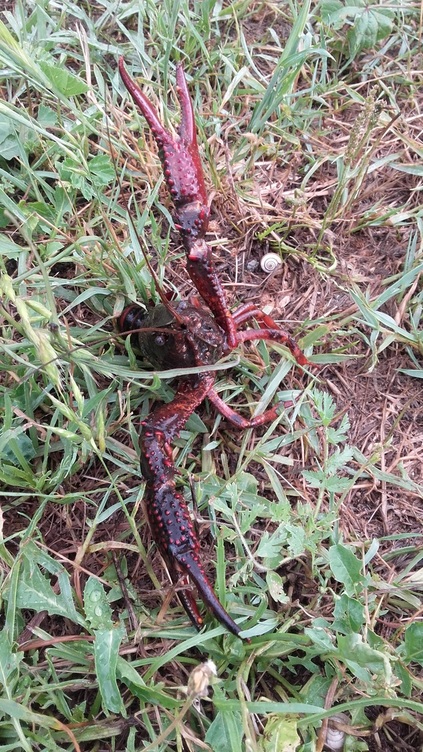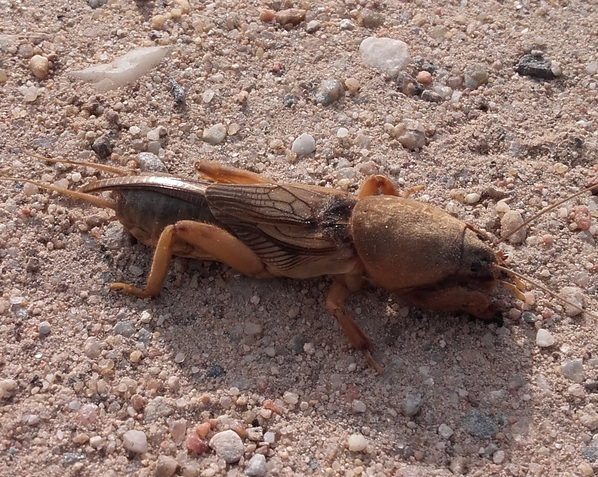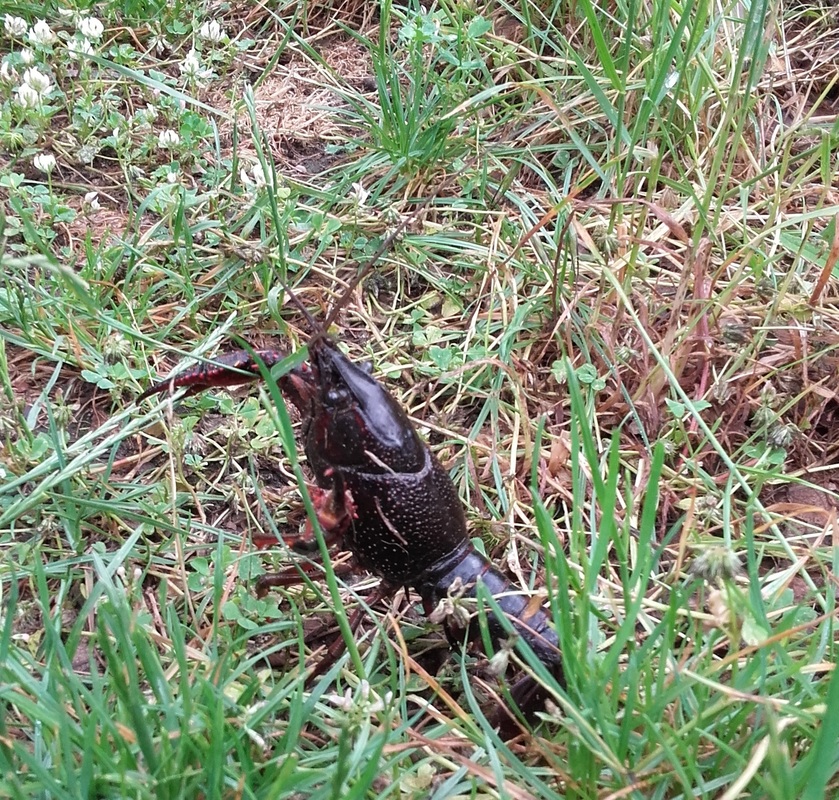I keep my dog on the lead for a heap of reasons, one of which is that he's an obsessive hunter. I would be unlikely to find him ever again if he were free to chase the wildlife that we sometimes come across. Nor would it be good for the animals and birds. But inevitably he stops to sniff the undergrowth - to check what's passed this way, to add his mark, and frequently to snatch up and gulp down something foul or rotting. The Find For Today, in the verge above a ditch between nectarine orchard and vineyard, was a dead crayfish. I'd stopped to watch swifts zoom past at eye-level, and was astonished when I next glanced down and saw a big red claw sticking out of his mouth.
After having bumped into a live one at the beginning of the month, to come across another, once again far from water, made me wonder what was going on. Had it been dropped by a predator, as suggested in a comment on my last blog? Or is their habitat more varied than I imagined and they can survive in ditches that are dry for most of the year? Or do they wander - especially after heavy rain? I've never seen them here before, but we have had more rain than usual this month.
Yesterday's thunderstorms left Mount Canigou with another powdering of snow - something I don't remember seeing mid-June before. Nor can I recall the countryside (or my garden) looking quite so lush at this time of year. The wildflowers have been spectacular - the scent of broom almost overpowering at times - and some grasses in verges, hedgerows and untended fields are now as tall as me! Perfect conditions for crayfish?
Time to find out more about them.
My dog's breakfast was the same species as the one we found a couple of weeks ago.
After surfing the net when we got back home this morning, I now know that these Southeastern USA and Mexican crayfish were introduced into several European countries in an effort to replace diminished stocks of our own native species. But as so often seems to happen with such programmes, there were escapees from farms, and some were released from aquaria. Others will indeed have been dispersed by birds such as herons.
Fascinating to discover that they are good climbers and can walk many kilometres overland, in search of water. (Sources differ as to distances - from 3 to 17km!) They can also survive long periods of drought by burrowing deep into riverbanks and ditches.
And in the breeding season the males go walkabout. Aha!
So perhaps the two crayfish I've seen have been males, and the live one knew exactly what he was doing that day I came across him. Or thought he did. It looks as though he (or another one) didn't make it after all, because the postscript to that story is that a few days later I (or rather my dog!) found an empty shell very close to where we first saw it (which was on the narrow track, bottom right, of this corner between vineyards):
Part of me had been feeling bad about having decided to let nature take its course and not try to help that one reach water (even though I only had my hat in which to carry it!). But now my conscience is much clearer. Because not only was he wandering of his own accord, but he and his kind are having a seriously negative impact on our ecosystem.
I've learned that they can breed in their second year, and females may lay up to 600 eggs at a time. In warm regions like this, there may even be two breeding cycles in twelve months. They are resistant to, but can transmit crayfish plague to our native species, the rare White-clawed crayfish/Écrevisse à pattes blanches. And all that burrowing can cause river banks to collapse, and can reduce clarity of water bodies, which in turn encourages the growth of certain unwanted algae. They are omnivorous and are implicated in the decline of some plant and animal species in some areas.
So what eats them?
I read that studies in Spain and Portugal show they are naturally predated by fox, otter, heron, stork, and some fish - including pike and bass. While this will help keep their numbers in check, it's alarming to discover that red swamp crayfish accumulate heavy metals, which can poison their predators.
Unfortunately, even had I known this last fact before today, I wouldn't have been able to stop my dog crunching up his find. All I can do is hope that just the one won't do him any harm.
None of this is the crayfishes' fault of course. It's all down to us. Nevertheless, although pleased to have solved the mystery of their appearance on land, I do see them in a different light now.
There's a different light outside the window too, as I end this blog. Another thunderstorm approaches. Will it spark more wanderings?
Postscript 18th June:
YES, is the answer to my last question. This morning, as I drove down to the orchards and vineyards, I had to stop for one crossing the road. In view of what I now know about about them, perhaps I should have run him over. But mosquitoes are about my limit when it comes to cold blooded murder. Trouble was, when I stopped he stopped, which made me feel obliged to get him safely out of the way so no one else could crush him either. Now my conscience is totally confused.




